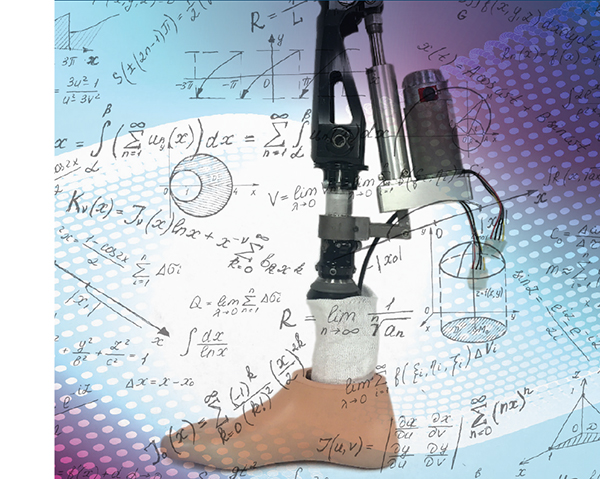If you’ve ever driven an electric vehicle or gas-electric hybrid, you’re familiar with the concept of regenerative braking. Instead of applying friction to the wheels via drums and discs, the brake pedal on an EV causes the motor to run in reverse. While conventional brakes burn off untapped momentum as heat during deceleration, regenerative brakes capture a chunk of that surplus energy—as much as 70 percent, in some cases—and send it back to the battery, extending the car’s efficiency and range.

In theory, that same approach could be used to improve efficiency and range in a powered-knee prosthesis. The idea has been floating around since the mid-2010s, when a handful of papers outlined a method for harnessing the excess energy in the gait cycle and funneling it into a motorized knee. Researchers at Cleveland State University and the Louis Stokes Cleveland VA Medical Center recently tested the feasibility of that idea. In a new paper in Medical Engineering and Physics, they describe a prototype powered prosthesis that’s driven in part by regenerated energy.
The project, funded by the National Science Foundation, represents the first use of energy regeneration in an active prosthetic knee during a human trial. The objective is to address some of the factors that have kept powered prosthetic legs from gaining widespread adoption. Although they require less effort than passive devices and produce a more natural gait, powered legs tend to run out of juice every few hours, and they don’t readily adapt to variations in terrain. Those limitations—combined with high cost and a fairly steep learning curve—has restricted powered prostheses to a relatively small set of users.
Cleveland State’s prototype is powered by 12-volt electric motor, with a bank of supercapacitors capable of storing up to 10.8 volts of regenerated energy. Because this reserve supply is continuously replenished during walking, the leg is designed to last all day on one charge. It also has a simplified power-control system that’s easier to calibrate for variable gait speeds than the systems employed by commercially available models.
The researchers tested their prototype on a 35-year-old male amputee, using his everyday socket and prosthetic foot. Over the course of three brief trials on a treadmill, the powered leg registered an average energy gain of about 7 percent while supporting the smoother gait and reduced effort of a regular powered knee. The subject expressed some concern about the prototype’s weight (roughly nine pounds, more than twice the heft of his regular prosthesis), but he exhibited better overall biomechanics with the powered leg than with his passive device.
Before the next test drive, researchers plan to trick out their leg with a powered ankle and more powerful motor, while streamlining the power train to reduce weight. There are many miles to go before this Tesla-like prosthesis is available to consumers, but the proof of concept is in place.



